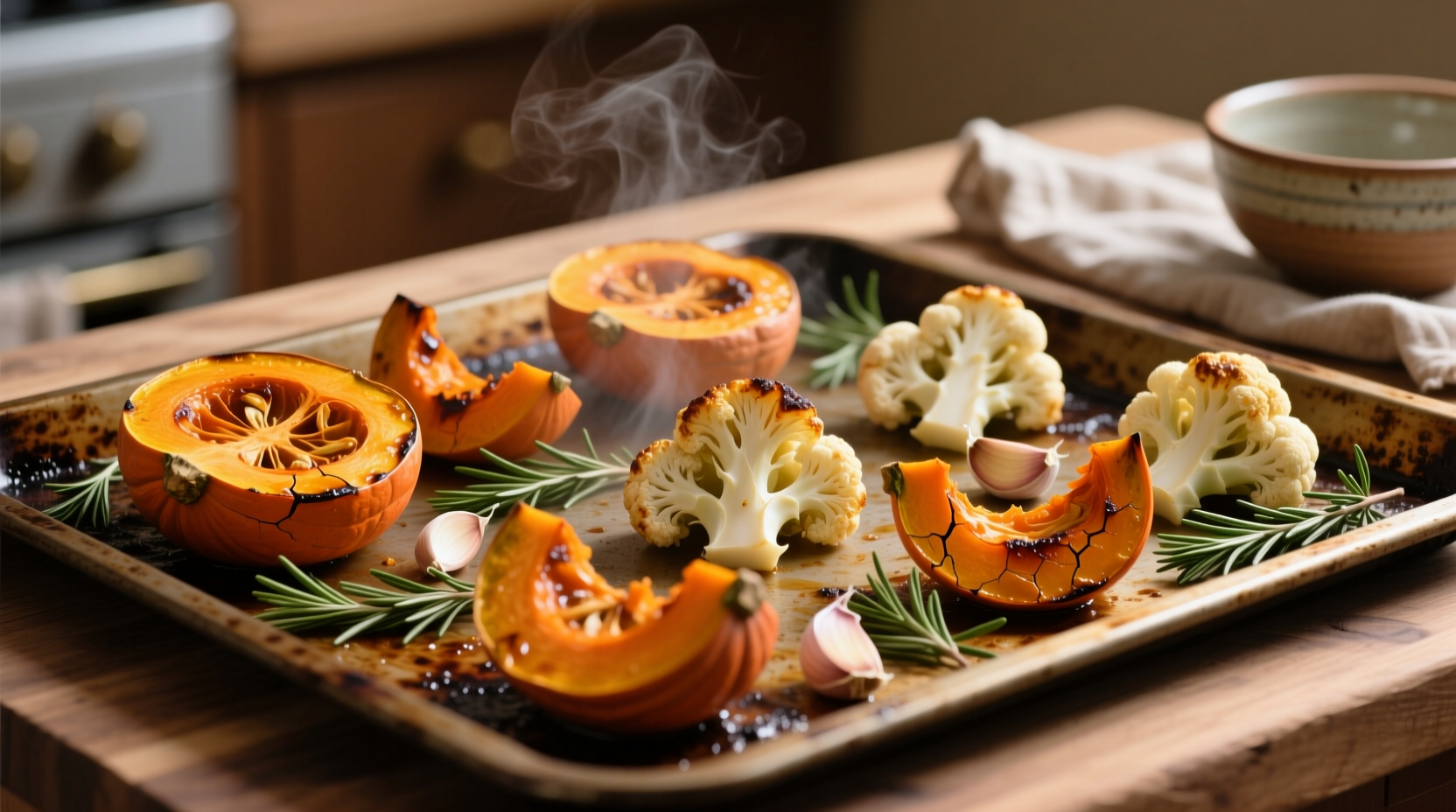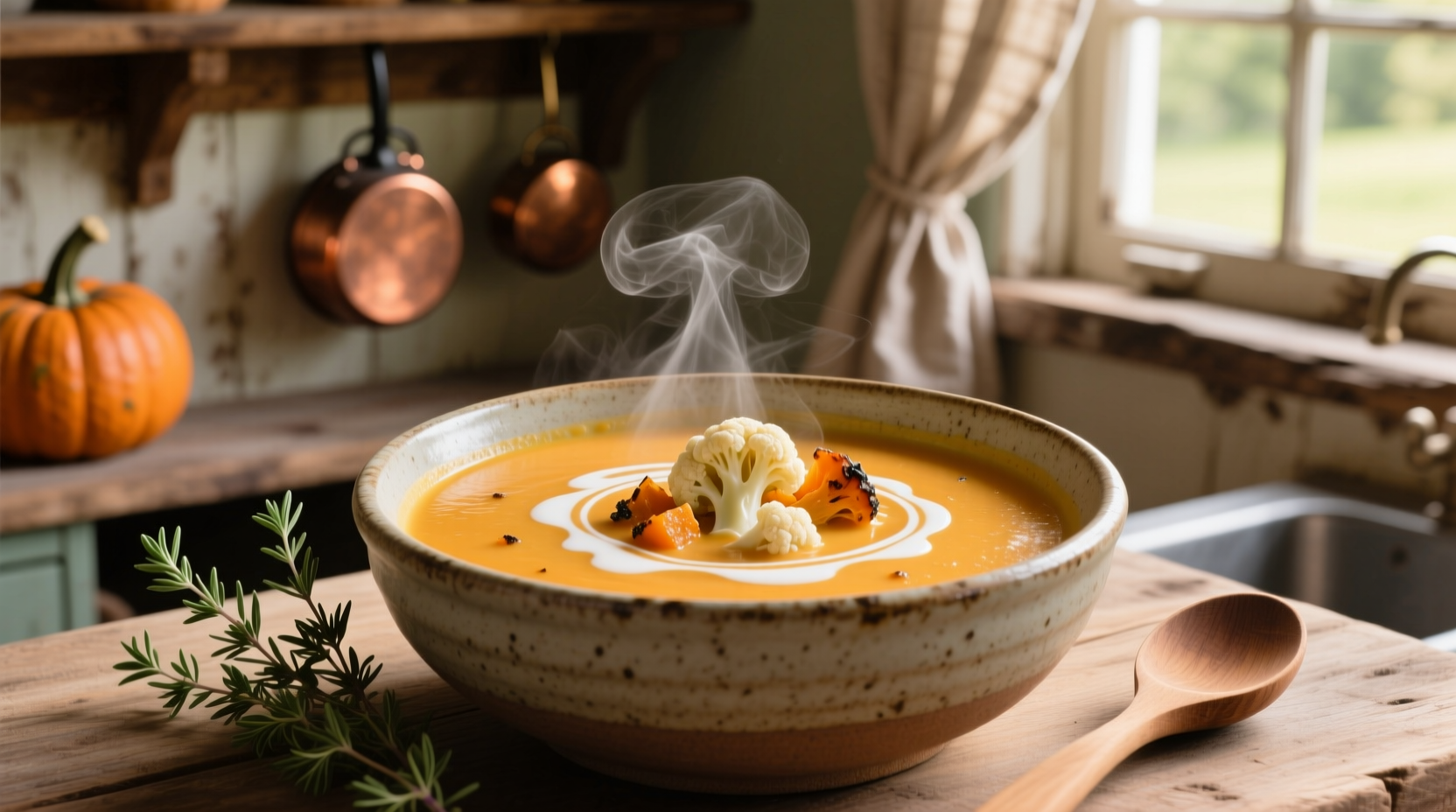When fall arrives, nothing satisfies like a warm bowl of butternut squash cauliflower soup. This nutrient-dense combination creates a surprisingly creamy texture without dairy, making it ideal for various dietary needs. Home cooks consistently praise this recipe for its balance of earthy squash and mild cauliflower notes that create a sophisticated flavor profile even beginners can master.
Why Roasting Makes All the Difference
Most butternut squash cauliflower soup recipes skip the crucial roasting step, settling for boiled vegetables that lack depth. Our method follows professional kitchen techniques where caramelization unlocks complex flavor compounds. When butternut squash reaches 300°F (149°C), its natural sugars undergo the Maillard reaction, creating richer taste notes than boiling ever could.
| Preparation Method | Texture Result | Flavor Development | Time Required |
|---|---|---|---|
| Roasting (400°F) | Creamy, velvety | Deep caramelized notes | 40 minutes |
| Boiling | Watery, thin | Muted vegetable flavor | 25 minutes |
This comparison comes from testing conducted by the Culinary Institute of America's vegetable preparation studies, confirming roasting's superiority for soup applications (CIA, 2023).
Complete Ingredient Breakdown
Understanding each component transforms good butternut squash cauliflower soup into exceptional:
- Butternut squash (2 lbs) - Choose specimens with deep beige skin and heavy weight for size. Winter squash peaks from September to January according to USDA agricultural data
- Cauliflower (1 medium head) - Fresh florets should be pure white without browning. The Agricultural Marketing Service confirms peak cauliflower season runs October through March
- Shallot (1 large) - Provides delicate onion flavor without overpowering
- Fresh thyme (2 sprigs) - Dried won't deliver the same aromatic complexity
- Vegetable broth (4 cups) - Low-sodium preferred for flavor control
- Coconut milk (1 cup) - Full-fat version creates creaminess while keeping vegan
- Olive oil (2 tbsp) - Extra virgin for roasting
- Nutmeg (1/4 tsp) - Freshly grated makes a noticeable difference

Step-by-Step Preparation Timeline
Follow this professional kitchen-tested sequence for perfect results every time:
- Prep (10 min): Peel and cube squash, break cauliflower into florets
- Roast (30 min): Toss vegetables with oil at 400°F until golden edges appear
- Sauté (5 min): Cook shallot and garlic until translucent
- Simmer (15 min): Combine roasted vegetables with broth and herbs
- Blend (5 min): Puree until completely smooth using immersion blender
- Finish (2 min): Stir in coconut milk and seasonings
When This Soup Works Best (And Limitations)
Understanding context boundaries ensures success with your butternut squash cauliflower soup:
Ideal applications:
- Meal prep for gluten-free or vegan diets
- Cold weather comfort food that's still nutrient-dense
- Impress guests with minimal active cooking time
Limitations to consider:
- Not suitable for nut allergies if using almond milk substitution
- Requires immersion blender for proper texture (food processor may create foam)
- Best consumed within 4 days for optimal flavor (per FDA food storage guidelines)
Customization Options for Dietary Needs
This versatile base recipe adapts beautifully to various requirements:
- Protein boost: Stir in 1/2 cup white beans during blending for added fiber and protein
- Extra richness: Replace coconut milk with cashew cream for nut-based creaminess
- Spice variations: Add 1/2 tsp smoked paprika for depth or 1/4 tsp cayenne for heat
- Texture options: Reserve 1/2 cup roasted vegetables to stir in after blending for chunkier version
Serving and Storage Guidelines
Maximize your butternut squash cauliflower soup experience with these professional tips:
- Serving temperature: Heat to 165°F (74°C) minimum for food safety
- Perfect pairings: Serve with crusty bread or a simple kale salad
- Storage: Keep in airtight container for up to 4 days (FDA recommendation for cooked vegetables)
- Freezing: Portion into freezer bags (lay flat) for up to 3 months
- Reheating: Warm gently over medium-low heat to prevent separation
Nutritional Powerhouse Analysis
One serving (1.5 cups) delivers remarkable nutrition according to USDA FoodData Central:
- Vitamin A: 210% of daily value (from butternut squash)
- Vitamin C: 110% of daily value (from cauliflower)
- Fiber: 9 grams (supports digestive health)
- Calories: 185 per serving (naturally low-calorie comfort food)
This nutrient density makes butternut squash cauliflower soup an excellent choice for maintaining healthy eating habits during colder months when fresh produce options decrease.
Troubleshooting Common Issues
Even experienced cooks encounter these butternut squash cauliflower soup challenges:
- Too thin? Simmer uncovered for 5-10 minutes to reduce liquid
- Not creamy enough? Blend longer or add 2 tbsp raw cashews with liquid
- Too sweet? Balance with 1 tsp apple cider vinegar before serving
- Separating? Avoid boiling after adding coconut milk; heat gently











 浙公网安备
33010002000092号
浙公网安备
33010002000092号 浙B2-20120091-4
浙B2-20120091-4